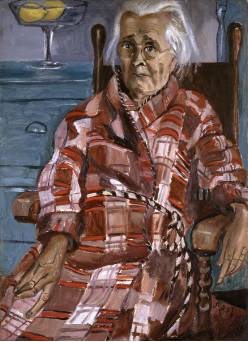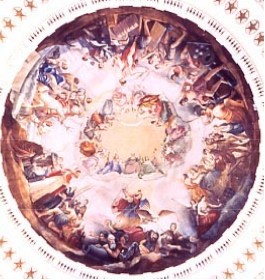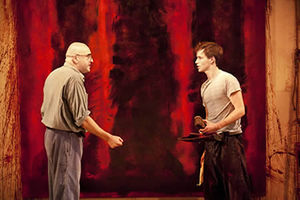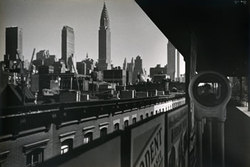If I had my druthers, I’d be Houston right now — and not just because it’s sunny and warm there, whereas just-ended March has been one of the rainiest ever in New York City.
 I’d be there to see the Alice Neel exhibition that opened on Mar. 21 at the Museum of Fine Arts, its only venue in the U.S. That part makes me glad, in one sense: the exhibit will travel instead to Whitechapel Gallery in London and then to Moderna Museet in Malmo, Sweden, and if Neel deserves more appreciation in the U.S. — and she does — she merits international exposure even more.
I’d be there to see the Alice Neel exhibition that opened on Mar. 21 at the Museum of Fine Arts, its only venue in the U.S. That part makes me glad, in one sense: the exhibit will travel instead to Whitechapel Gallery in London and then to Moderna Museet in Malmo, Sweden, and if Neel deserves more appreciation in the U.S. — and she does — she merits international exposure even more.
Neel’s estate maintains a website for her, with a bio on its home page that labels her a pioneer, an apt description — for she was a brave painter. She went her own way, no matter what the rest of the art world did and no matter what the world said.
The exhibition, called Alice Neel: Painted Truths, includes 68 paintings from throughout her career, with the curators simply picking her best works, mainly her portraits and cityscapes. Bravo. If greatest hits exhibits are out-of-fashion, so what?
The catalogue contains three artists’ appreciations: Frank Auerbach writes that “Alice does not need my encomium,” and concludes a few lines later saying she is one of his heroes. Chris Ofili is likewise short, writing a verse called “Thoughts On The Love That Forgives” referring to Neel’s acuity (I think). But leave it to Marlene Dumas to describe how Neel painted modern portraits, locating her subjects. Dumas writes:
…She painted people.
Most figurative painting is not about people and seldom about “characters.” Philip Guston painted cartoons. Warhol painted public images. Chuck Close uses portraiture to paint about painting; Alex Katz paints the cool; and Elizabeth Peyton paints dreams…
 Dumas also notes that “the unflattering criticism she received about her nude self-portrait at age eighty [left] is unforgivably stupid.”
Dumas also notes that “the unflattering criticism she received about her nude self-portrait at age eighty [left] is unforgivably stupid.”
No matter. Alice Neel simply painted what she wanted, the way she wanted. As MFA director, Peter Marzio, says in his Preface, “This is genius, pure and simple.”
Interestingly, the market has caught on as well. As Art + Auction recently wrote, dealers are now selling her to contemporary collectors, rather than American art collectors. And when the Cleveland Museum of Art purchased her painting of Jackie Curtis and Rita Red last fall for $1.65 million, versus a presale estimate of $400,000 to $500,000, MFAH was the underbidder.
Moderna Museet is billing Neel as a contemporary artist as well, though she was born in 1900 and died in 1984. There, she is the first artist in a new series of four exhibits per year called Moderna Museet Now. Love it.
Photo Credit: Last Sickness, 1953, Philadelphia Museum of Art (top); National Gallery of Art (bottom), both © Estate of Alice Neel.



 The Mural in America
The Mural in America 

 As the MWO literature says, “
As the MWO literature says, “